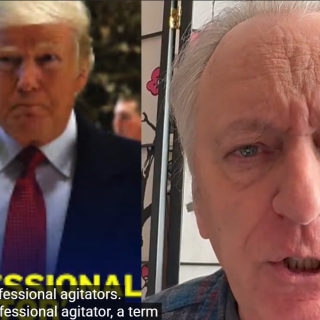Advertisement
The morning after Election Day 2015, I woke up suddenly. My mind was racing, “This isn’t right. This isn’t right. Something’s not right.” As an analyst, I’m used to working with mass quantities of data; I’m used to looking at patterns of numbers. Sometimes these differences just leap out at me. Such was the case on that morning.
The prior evening, Issue 3, which would have legalized marijuana in Ohio while according growing rights to just ten properties, went down in flames. Just 34 percent of voters supported the measure; a crushing 65 percent opposed it. So said Ohio’s election officials when the vote was called at 9:41 pm.
The defeat had opponents jumping for joy. Issue 3’s “deeply flawed, monopolistic approach failed garner broad support” said one. It “would have made a handful of rich celebrities and businesspeople even richer” mused another. Meanwhile, those who understand the sordid history of Ohio elections were witnessing the repeat of a troubling pattern.
So what’s a girl to do when she’s convinced that election numbers don’t add up? Well, how about calling the state’s leading expert in election protection, who also happens to sit on the board of the Ohio Rights Group, which she chairs.
Election law pumps through Bob Fitrakis’ veins. A PhD in Political Science and practicing attorney, Fitrakis began observing elections in El Salvador and Mexico in the early 1990s. He was one of four attorneys who challenged the outcome of the 2004 presidential election in Moss v. Bush. With Harvey Wasserman, he co-authored Did George W. Bush Steal America's 2004 Election? and How the GOP Stole America's 2004 Election & Is Rigging 2008.
The co-authors have teamed up again to publish a continuing series of articles that makes similar claims with 2015 twist: instead of monopolies or rich backers, it was Ohio’s corrupt voting system that caused marijuana legalization to fail. Unbeknownst to me, their first article, “Corporate Pot Goes Down in Ohio,” had already been published. Tellingly, they wrote, “the election also reeked of the usual electronic manipulation that’s marked all Ohio elections since 2004.”
Bob and I spoke for an hour that morning about elections, vote flipping, poll books and more. I felt I had to do something, so what better place to start than Facebook.
On a friend’s page I found two screen shots from WHIO in Dayton. One, taken at 9:39 pm just two minutes before the election was called, had Issue 3 winning with what? 65 percent of the vote. Flashing forward a mere 11 minutes to 9:50 pm, the other shot showed a mysterious drop of 354,796 votes to reflect the exact opposite result, a 65-34 percent loss. Further, with vote counts, consistency has no virtue. Rarely do election returns come in throughout the evening with steady 65-34 percent margins as they did with Issue 3. It should be noted that these numbers came directly from the office of Secretary of State Jon Husted.
The next day, another set of screen shots from another part of the state with differing times arrived showing the same pattern. With these shots, Wasserman and Fitrakis became more pointed, “Was Ohio’s Corporate Pot Vote Stolen?” The article concluded that “The official vote count is not plausible,” a fancy way of saying the outcome was impossible.
One week later, the stakes rose higher. Wasserman and Fitrakis had secured pre-election tracking polls from Jon Zogby and the Kitchens Group. As the duo noted in their article “Ohio Polls Showed Pot Legalization Winning ...But then it Failed 2:1”, the 65-34 percent vote could only be explained if, “100 percent of the undecided people would have had to vote against Issue 3 and 14 percent of its supporters would have changed their minds and voted no.”
Additional complaints about election misconduct emerged: missing names, incorrect addresses, lost registrations and even voters who actually saw the 65 percent flip from the win column to the lose column.
Finally, on November 23rd, the die was cast. The Columbus Free Press asked Ron Baiman, a statistics professor at Benedictine University to compare the official vote to tracking polls. His conclusion? “The results are not only impossible but unfathomable.” The official tally could only be expected in one out of 799,000,000 elections. Wasserman and Fitrakis bluntly wrote, “Ohio’s notoriously corrupt, antiquated and highly-vulnerable voting system was hacked or manipulated by partisans like Ohio’s Secretary of State Husted.”
Clearly, my morning-after angst was spot on. But, were others sharing my concerns? Some, yes. Others had this to say: “This whole argument seems mostly whining with a big layer of phony.” Or “This is a gigantic nothingburger.” Or “You’re just sore losers. Get a grip.” Really?
Ohio elections tell a sorry story. There’s 2004, which, according to Wasserman and Fitrakis, caught George W. Bush stealing the presidency from John Kerry. One year later, votes flipped by up to 40 points to defeat a Reform Ohio Now ballot measure that would have created a nonpartisan election system. Then there’s 2012 when the hacktivist group Anonymous is said to have thwarted Karl Rove’s attempt to rig the Ohio’s presidential vote to favor Mitt Romney, who appears to have a history of vote flipping.
What is vote flipping? It’s the process of electronically changing votes from one candidate to another, or in the case of Issue 3, from winning to losing. The Daily Kos notes, “Vote flipping is difficult to detect because the vote totals remain the same for each precinct. In one of several possible scenarios, an instruction is given to a precinct level voting machine or to a county-level central tabulator. The corrupted totals from precincts are sent from county election officials to state elections board and published as final results.” A 2012 study that examined the primary vote for Romney found a convincing pattern that “violated acceptable levels for probability.” In which state? Ohio, of course.
Why does this matter? First, because the ballot box has served as the agent of change for marijuana policy in half of the 23 states than now have some form of legalization. Does the defeat of Issue 3 offer a new way to stop marijuana reform: just flip yes votes to no votes?
Secondly and more importantly, to the nothingburgers who think the unfathomable 65-34 percent split amounts to the quibbling of sore losers, you might want to consider the 2016 presidential election with its unconventional candidates like Bernie Sanders or even Donald Trump. Do they stand a chance, if Ohio politicos can flip votes to suit their partisan aims? Based on the 2004, 2008 and 2012 presidential elections and now Issue 3, Wasserman’s and Fitrakis’ warning is prophetic, “Whatever finally happens with the electronic outcome of this year’s referendum, anyone with a serious interest in the 2016 presidential election in this crucial swing state might do well to take notice.” The real question becomes, how you do you wish to wake up the morning after Election Day 2016?
If you’re asking what you can do, here are a few suggestions.
-
The first answer is don’t abandon the process. Register to vote, and then vote in each and every election.
-
Find articles about Ohio election fraud and post them to the Facebook page of the Stand Up 4 Your Rights PAC. Let’s create an archive and discussion about honest – and dishonest – elections.
-
Train and serve as election watchers beginning with Ohio’s Primary Election in March 2016.
-
During an election, take screen shots of your vote and the vote count as it comes in on television and the Internet. Let officials know you’re watching them.
-
Support The Columbus Free Press. Why isn’t election fraud reported in the mainstream media? Because, well, they’re mainstream. Independent news organizations are better able to provide details on such controversial issues.
-
Raise your voice and call for an investigation into the 2015 vote concerning Issues 3 and 2. Note: as of this writing, the election results have not yet been certified by the Ohio Secretary of State. Once they are certified, challenges can begin by the Issue 3 campaign or independently by parties like The Columbus Free Press, Wasserman and Fitrakis.
-
Donate to the Ohio Rights Group Education Fund. Throughout 2016, a portion of its educational activities will support election protection.
Corporate Pot Goes Down in Ohio
by Bob Fitrakis and Harvey Wasserman
Columbus Free Press and Common Dreams
November 4, 2015
http://freepress.org/article/corporate-pot-goes-down-ohio-0
Was Ohio’s Corporate Pot Vote Stolen?
by Bob Fitrakis and Harvey Wasserman
Columbus Free Press and AlterNet
November 6, 2015
http://columbusfreepress.com/article/was-ohio%E2%80%99s-corporate-pot-vote-stolen
New Evidence Emerges of Vote Counting Chicanery in Ohio Pot Ballot Initiative
More screenshots of Tuesday's vote count indicate massive vote flipping.
By Steven Rosenfeld
AlterNet
November 7, 2015
Ohio Polls Showed Pot Legalization Winning ...But then it Failed 2:1
by Bob Fitrakis and Harvey Wasserman
Columbus Free Press
November 13, 2015
http://columbusfreepress.com/article/ohio-polls-showed-pot-legalization-winning-then-it-failed-21
Sorry Ohio, You May Have Lost Out On Legal Weed Thanks To Election Fraud
Hundreds of thousands of “yes” votes flipped to “no” votes
By Carey Wedler
Infowars
November 13, 2015
http://www.infowars.com/sorry-ohio-you-may-have-lost-out-on-legal-weed-thanks-to-election-fraud/
Official Vote Tally on Ohio’s Pot Issue Deemed "Statistically Impossible"
by Bob Fitrakis and Harvey Wasserman
Columbus Free Press
November 23, 2015



